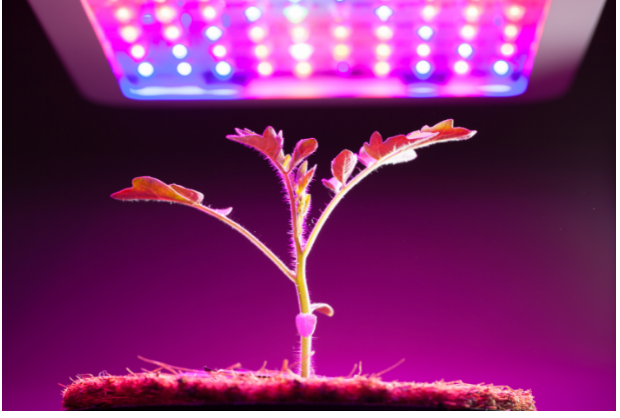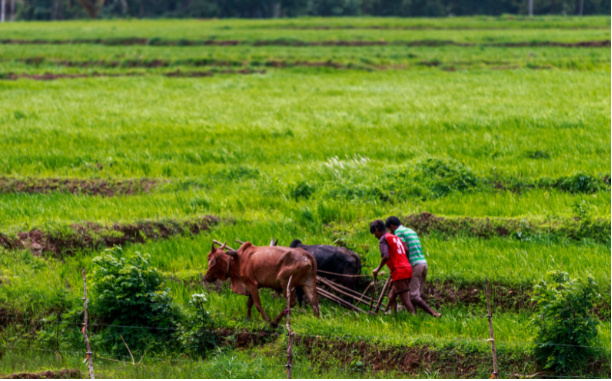According to the U.S. Department of Agriculture, almost 34 million US citizens face severe food insecurity. Adding fuel to the fire, the USA lost 4 million acres of fertile agricultural land to urbanization in 2020 alone.
Besides the agricultural land, the forests are also facing severe deforestation for urban development. All these issues are leading to problems like food insecurity, pollution, and climate change. So, is there a way to retain greenness without halting our progress? Yes, there is
The hydroponics culture technique is the solution to the problem of shrinking greenery in the cities. Traditional farming in urban areas is unfeasible due to the lack of large cultivable land, and soil. Hydroponic plants do away with both of these limitations and ensure the presence of nature amidst even the most congested urban setups. It allows farming without any need for vast space or soil.
What is Hydroponic Culture Technique?
In the simplest terms, this is the technique of growing plants without soil. Instead of soil, hydroponics uses water as a growing medium. The nutrients that plants normally get from soil are dissolved in the hydroponic water artificially.
In nature, nature itself provides the individual needs of each plant type. However, here, humans play nature and provide conditions and nutrients that meet the needs of each plant type that they intend to grow as hydroponics.
Components of Hydroponic System
The conditions in the hydroponic system are made to imitate exactly what a plant would face in nature, but better. In nature, a plant needs soil, water, light, and nutrients. In hydroponic setup, it needs the following
Growing Medium
A medium from which the plant takes its nutrients for growth and development is called a growing medium. In hydroponics, water is used for this purpose. The name “hydroponics” literally means “water work”, meaning the water is doing the task of growing plants here.
Water cannot germinate seeds. Therefore, the seeds are germinated in other media, and then the seedlings are shifted to the water.
Nutrients
Water is an essential need of plants for photosynthesis, but here in hydroponics, it is more than just a photosynthetic need. Here it carries all the necessary nutrients for plants to thrive.
Since pure water lacks all those nutrients, they must be added artificially. Growers add both organic and inorganic nutrients to the hydroponic water.
All nutrients might have the same goal, but those little variations they have can have lasting effects on, especially, the plants grown for food. Therefore, experts advise to always research a little and choose the best hydroponic nutrients for vegetables.
Lighting
Besides water and carbon dioxide, plants need light to make food. For hydroponics, sunlight can be used, however, there are several limitations attached to it. Like, it only comes for a specific period of time, and that duration can change at the moment due to weather conditions.
Therefore, growers prefer artificial grow lights. Their strength, intensity, duration, and wavelength can be adjusted as per the needs and demands of the grower for its plant.

pH Meter, EC Meter, and Temperature Regulators
Imitating nature is a hard task, but with technology, it is not. Plant bodies, just like ours, respond actively to environmental factors like pH and temperature.
Each plant gives the best yield at a narrow range of pH, EC, and temperature. To achieve this best yield, ideal conditions are created with the help of technology. Therefore, they must be regulated keenly with tools like pH, EC, and temperature regulators.
Advantages of Hydroponic Culture Technique
The first and foremost advantage of the hydroponic culture technique over traditional farming is that it is viable in even the most confined spaces. But besides this, there are other several benefits of hydroponics that make it a better alternative
Higher Yield
Hydroponics plants grow under the ideal conditions that are almost never possible to achieve in open systems such as fields. This results in hydroponics giving at least 3 times more yield than its alternative – traditional farming. This is primarily due to the fact that they grow in nutrient-dense media, and are much closer to each other, saving a lot of space.
Water Conservation
On average, plants grown using the hydroponic culture technique consume 90% less water as compared to the same plants grown using traditional methods.
In farms and fields, plants take up a small amount of given water, and the rest seeps deep down into the land. That seeped-down water may or may not be accessible by the roots of plants.
While hydroponics recycle and use the same water again and again until it is no longer usable by the plant. This reduces water waste significantly.
Completely Clean & Hygienic
One of the major problems with soil farming is the danger of pests and disease. Microbes and spores can land from anywhere in the open field. So you either leave your plants as it is and risk disease, or you sterilize them with chemicals, both of which have their own pros and cons.
However, hydroponics in this regard only has pros. Being in a controlled environment, there are very thin chances of random pests or spores landing on the plant. If they still do, it does not pose a risk to the whole setup, as you can just remove that plant and change the hydroponic water.
Moreover, the lack of soil in the whole operation makes things a lot more transparent, both literally and figuratively. You can keep the hydroponics setup inside your dining room, and it will look more like a showpiece, than a food farm.
More regulated
Natural plants can only be as free as nature allows them to be. However, in hydroponics, everything is regulated by the growers and hence the possibilities are endless. You can change the conditions however you want.
With hydroponics, you can get any fruit, or vegetable all year around without any seasonal limitation. Plus, it does not matter whether the weather is cloudy, sunny, or rainy; for your plants, it is what’s best for them.
Real-World Examples of Why Hydroponics is The Future
Hydroponics is not something new, rather it’s been almost 100 years since scientists from the University of California conducted in-depth research into the hydroponic culture technique. Since then, many have experimented and have gained success in establishing booming farming and food businesses through hydroponics.
The most remarkable example is the Netherlands, which owns 2.2 million hectares of agricultural land. This number is quite small when compared to a country like Pakistan which has 22.1 million hectares of cultivable land, and also calls itself an agricultural country, since more than 60% of its population, directly or indirectly, depends on agriculture for livelihood.
Instead of letting go of the agriculture sectors with so little land in their hands, the Netherlands thought of something new. Today, the Netherlands is the world’s 2nd largest food exporter, while Pakistan is not among even the top 20. The reason for this agricultural success of the Netherlands in so little space lies in the incorporation of modern techniques in farming, which developing nations like Pakistan completely ignore.

The Netherlands is Europe’s largest greenhouse food grower. And more than half of that food is grown through the hydroponic culture technique. We all can learn from the Netherlands to make more from less and play our role in combating global food insecurity.
Desert countries like Qatar, Saudi Arabia, and Palestine are also planning and investing in the agriculture sectors, all because of the ability of hydroponics to grow plants in all types of climates. In 2020, Qatar had its highest-ever vegetable yield, all thanks to hydroponics.
Amidst the current global crises like food shortage, water scarcity, and cultivable land shortage, all shrewd nations are moving towards hydroponics to combat these issues. It definitely looks like hydroponics is the future of urban farming. If developing countries need to survive, and ensure the availability of food for their people, then today or tomorrow, they need to incorporate a huge share of hydroponics into their agriculture sector.



































